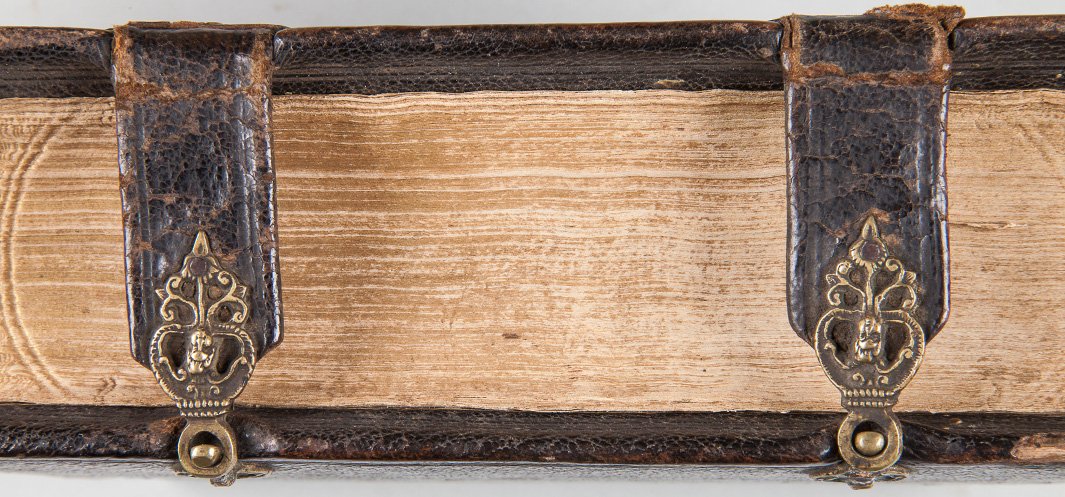Department XVI - The Czartoryski library
In total, the collection of old prints and cartography includes over 225,000 volumes representing the groups described below.
There are 333 bibliographic items in the collection of incunabula, including 77 prints dating from the 15th-century - the Princes Czartoryski Library is the only one in Poland that can boast of such a collection. Its typographic and writing polonica are its most prized possessions: the Library holds three out of four oldest prints produced in Poland by the itinerant publisher from Bavaria Kasper Straube, who was active in Krakow. The typographic polonica include 14 incunabula from the Seville-based publishing house of Stanisław Polak, who holds a prominent place in the history of printing.
16-th century polonica (works written by Poles or about Poland) are called cimelia at the Princes Czartoryski Library, and account for 2620 inventory items, outranking in value other leading collections in Polish libraries. The cimelia include seven volumes from the library of king Sigismund II August, with the first Nuremberg edition of Nicolaus Copernicus’s De Revolutionibus Orbium Coelestium (1543).
The corpus of pamphlets comprises 7,000 inventory items, their geographic range covering the territory of pre-war Poland and the countries tied with Poland by common interests. The pillars of the catalogue are materials concerning the November Uprising, the Krakow Uprising, the January Uprising and the European Revolutions of 1848. The rich collection of pamphlets relating to the political activity of the bloc centred around Hôtel Lambert and the Czartoryski family is no less interesting.
The musical collection of 1300 items is so diverse that it provides sufficient material to study the history of music, both secular and religious, Polish and foreign alike. The collection spans the period from the 16th to the 19th century.
The holdings of old magazines comprise 43,317 volumes of Polish and foreign periodicals from the 17th century up till now. The oldest possession is Gazette de France (1635–1684). Polish periodical press is represented by Mercurius Polonicus (1698). The full edition of Gazette des Beaux-Arts, a French magazine on arts published from 1859 onwards is a rare bird.
The cartographic collection includes 3500 items with 7037 maps and atlases. The objects range in date from the 16th to the 20th century. Phenomenal on the global scale and the most precious among the Library’s holdings is the atlas entitled Geografia tavole moderne di geografia de la maggiore parte del mondo di divesi autore (Rome, ca. 1573). The hand-written map of Ukraine from 1650 is definitely unique.
The book collection grows from year to year with new acquisitions of finite and continuing publications. Books and magazines are obtained through gifts and purchases.
There are 333 bibliographic items in the collection of incunabula, including 77 prints dating from the 15th-century - the Princes Czartoryski Library is the only one in Poland that can boast of such a collection. Its typographic and writing polonica are its most prized possessions: the Library holds three out of four oldest prints produced in Poland by the itinerant publisher from Bavaria Kasper Straube, who was active in Krakow. The typographic polonica include 14 incunabula from the Seville-based publishing house of Stanisław Polak, who holds a prominent place in the history of printing.
16-th century polonica (works written by Poles or about Poland) are called cimelia at the Princes Czartoryski Library, and account for 2620 inventory items, outranking in value other leading collections in Polish libraries. The cimelia include seven volumes from the library of king Sigismund II August, with the first Nuremberg edition of Nicolaus Copernicus’s De Revolutionibus Orbium Coelestium (1543).
The corpus of pamphlets comprises 7,000 inventory items, their geographic range covering the territory of pre-war Poland and the countries tied with Poland by common interests. The pillars of the catalogue are materials concerning the November Uprising, the Krakow Uprising, the January Uprising and the European Revolutions of 1848. The rich collection of pamphlets relating to the political activity of the bloc centred around Hôtel Lambert and the Czartoryski family is no less interesting.
The musical collection of 1300 items is so diverse that it provides sufficient material to study the history of music, both secular and religious, Polish and foreign alike. The collection spans the period from the 16th to the 19th century.
The holdings of old magazines comprise 43,317 volumes of Polish and foreign periodicals from the 17th century up till now. The oldest possession is Gazette de France (1635–1684). Polish periodical press is represented by Mercurius Polonicus (1698). The full edition of Gazette des Beaux-Arts, a French magazine on arts published from 1859 onwards is a rare bird.
The cartographic collection includes 3500 items with 7037 maps and atlases. The objects range in date from the 16th to the 20th century. Phenomenal on the global scale and the most precious among the Library’s holdings is the atlas entitled Geografia tavole moderne di geografia de la maggiore parte del mondo di divesi autore (Rome, ca. 1573). The hand-written map of Ukraine from 1650 is definitely unique.
The book collection grows from year to year with new acquisitions of finite and continuing publications. Books and magazines are obtained through gifts and purchases.
